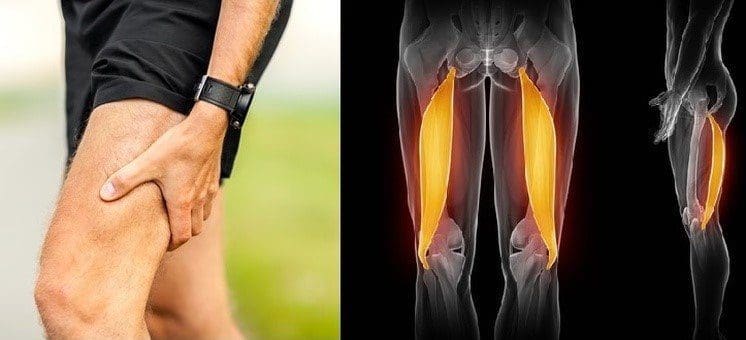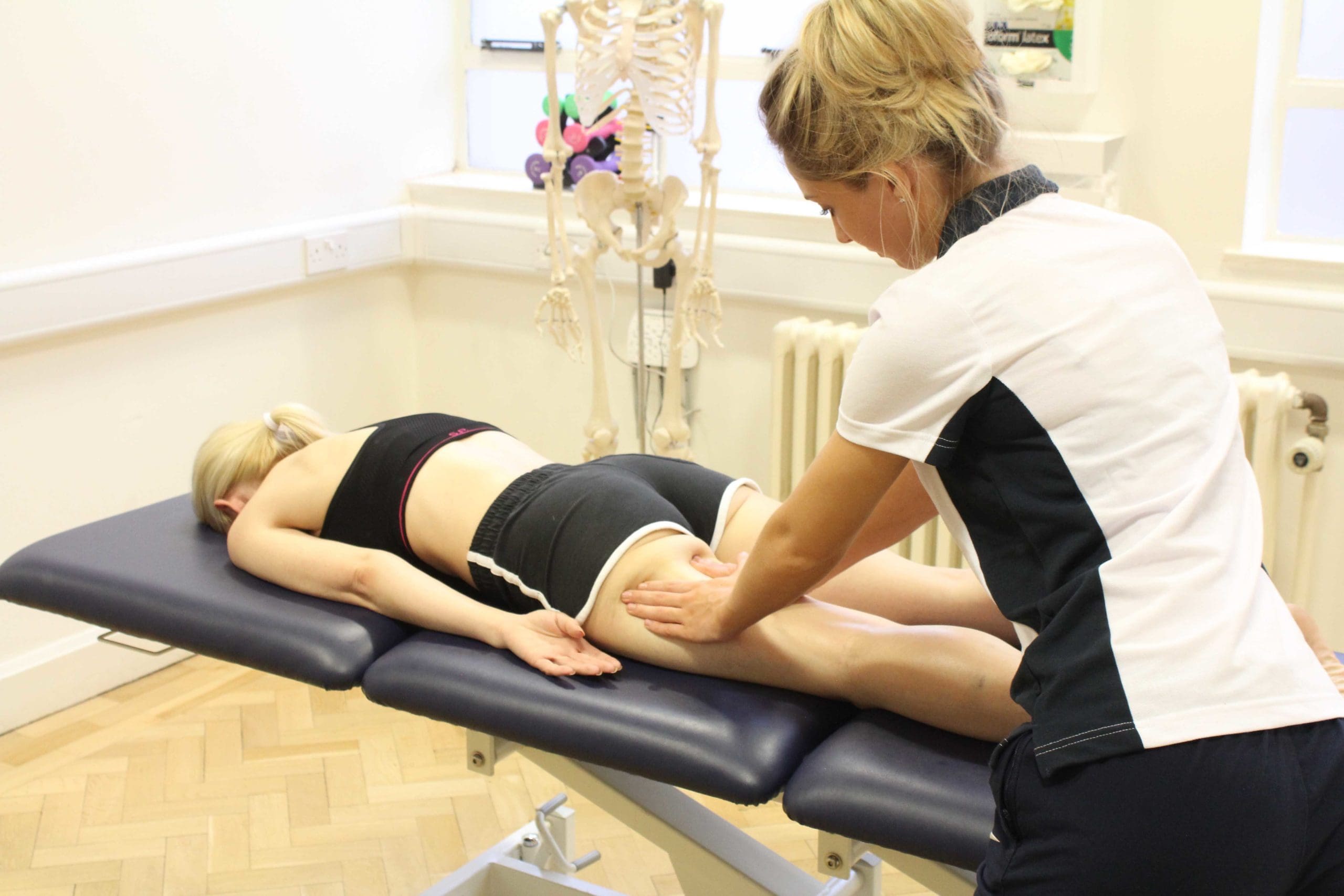Table of Contents
Introduction
How do non-surgical treatments compare with traditional surgical treatments to improve mobility for individuals with hamstring injuries? The hamstrings are muscles in the lower extremities that provide mobility to the legs and stabilize the pelvis. Many athletes rely on their hamstrings to perform strenuous actions such as sprinting, jumping, squatting, and kicking during sporting events. However, the hamstrings are also very susceptible to injury. Athletes who repeatedly overstretch their hamstrings can experience muscle strain until microscopic tears form, which is common. Similarly, individuals who sit for long periods can also experience hamstring issues. When individuals are not physically active, their hamstrings can become weak and shortened, leading to symptoms such as muscle pain, trigger points, and strain on the accessory muscles. Hamstring injuries can also cause other issues that affect the lower body extremities. This article will explore how hamstring injuries affect mobility and how non-surgical treatments help people regain mobility. We work with certified medical providers who use our patients’ valuable information to treat individuals suffering from hamstring injuries and inform them about non-surgical treatments to regain mobility. We encourage patients to ask essential questions and seek education from our associated medical providers about their condition. Dr. Jimenez, D.C., provides this information as an educational service. Disclaimer
Hamstring Injuries Implementing Other Issues
Do you experience stiffness in the back of your thighs when warming up before exercising? Are you feeling radiating pain from the side of your hips and glutes due to prolonged sitting? Or do you tend to limp, affecting your gait and walking? Many people are unaware they are overexerting their hamstrings, which can cause pain. Those who engage in sports or work sedentary jobs may over or underuse their hamstrings, affecting their flexibility and mobility to the lower extremities. According to research studies, hamstring injuries are the most common non-contact muscle injuries caused by two mechanisms of injuries: stretch-type and sprint-type. Sprint-type injuries associated with hamstrings occur when the muscles are overexerted due to maximal or near-maximal action, causing muscle fatigue. To that point, hamstring injuries can also affect a person’s walking mobility.
Running without properly warming up the hamstring muscle can cause muscle fatigue. Stretch-type injuries associated with the hamstring muscles involve combination movements that include extreme hip flexion and knee extension. These injuries can also mimic sciatica, leading people to believe their sciatic nerve is acting up. However, treatments available can help reduce the pain associated with hamstring injuries and lengthen the shortened muscle to reduce pain.
Best Lower Body Stretches To Increase Flexibility-Video
If you want to reduce the pain associated with hamstring injuries, incorporating RICE can help prevent it from becoming chronic. This involves gently stretching the affected muscle to avoid cramps and pain while increasing flexibility. Hamstring injuries can also be linked to other chronic issues, which can cause inflammation in the surrounding muscles. Studies show that conditions like piriformis syndrome can cause nerve entrapment in the hamstrings, resulting in radiating pain down the leg that mimics low back pain and sciatica. As previously mentioned, hamstring injuries can limit mobility and be linked to chronic conditions. Thankfully, non-surgical treatments can help reduce pain and provide relief. Check out the video above to learn different stretches that can help reduce pain in the lower body and increase flexibility.
Treatments To Restore Mobility
If rest, ice, compression, and gentle stretching do not provide relief, incorporating treatments for hamstring injuries to restore mobility can benefit many individuals. Seeking the help of a pain specialist, such as a massage therapist or chiropractor, to create a customized plan/program is recommended. There are various approaches that pain specialists can use to regain mobility and treat hamstring injuries.
MET Therapy
Many chiropractors and massage therapists incorporate MET (muscle energy techniques) therapy to gently stretch out the shortened hamstring muscle and help restore joint mobility in the lower extremities. In “Clinical Applications of Neuromuscular Techniques,” written by Leon Chaitow, N.D., D.O., and Judith Walker DeLany, L.M.T., stated that MET is crucial in stretching and strengthening the hamstring muscles through isometric contraction. At the same time, additional research studies reveal that the MET technique allows the hamstrings to have a greater increase in hip flexion ranges. MET therapy also helps strengthen the accessory muscles surrounding the hamstrings to restore mobility.
Spinal Decompression
If hamstring injuries are caused by nerve entrapment, then trying out spinal decompression can help restore mobility to the hips and lower extremities. According to “The Ultimate Spinal Decompression,” written by Dr. Eric Kaplan, D.C., FIAMA, and Dr. Perry Bard, D.C., stated that spinal decompression is safe and gentle on the spine as it provides gentle traction on the spinal disc to reduce pain and increase disc height. When hamstring injuries are associated with nerve entrapment, it could result from a herniated disc that aggravates the nerve root and causes referred pain to the hamstrings. Using gentle traction on the spine can help alleviate the pain caused by the aggravating nerve and reduce pain in the hamstrings. Many individuals can incorporate these treatments to reduce hamstring injuries and regain their mobility back to their legs.
References
Chaitow, L., & Delany, J. (2002). Clinical application of neuromuscular techniques. Vol. 2, The lower body. Churchill Livingstone.
Kaplan, E., & Bard, P. (2023). The Ulitimate Spinal Decompression. JETLAUNCH.
Disclaimer
Post Disclaimer
Professional Scope of Practice *
The information on this blog site is not intended to replace a one-on-one relationship with a qualified healthcare professional or licensed physician and is not medical advice. We encourage you to make healthcare decisions based on your research and partnership with a qualified healthcare professional.
Blog Information & Scope Discussions
Welcome to El Paso's Premier Wellness and Injury Care Clinic & Wellness Blog, where Dr. Alex Jimenez, DC, FNP-C, a board-certified Family Practice Nurse Practitioner (FNP-BC) and Chiropractor (DC), presents insights on how our team is dedicated to holistic healing and personalized care. Our practice aligns with evidence-based treatment protocols inspired by integrative medicine principles, similar to those found on this site and our family practice-based chiromed.com site, focusing on restoring health naturally for patients of all ages.
Our areas of chiropractic practice include Wellness & Nutrition, Chronic Pain, Personal Injury, Auto Accident Care, Work Injuries, Back Injury, Low Back Pain, Neck Pain, Migraine Headaches, Sports Injuries, Severe Sciatica, Scoliosis, Complex Herniated Discs, Fibromyalgia, Chronic Pain, Complex Injuries, Stress Management, Functional Medicine Treatments, and in-scope care protocols.
Our information scope is limited to chiropractic, musculoskeletal, physical medicine, wellness, contributing etiological viscerosomatic disturbances within clinical presentations, associated somato-visceral reflex clinical dynamics, subluxation complexes, sensitive health issues, and functional medicine articles, topics, and discussions.
We provide and present clinical collaboration with specialists from various disciplines. Each specialist is governed by their professional scope of practice and their jurisdiction of licensure. We use functional health & wellness protocols to treat and support care for the injuries or disorders of the musculoskeletal system.
Our videos, posts, topics, subjects, and insights cover clinical matters and issues that relate to and directly or indirectly support our clinical scope of practice.*
Our office has made a reasonable effort to provide supportive citations and has identified relevant research studies that support our posts. We provide copies of supporting research studies available to regulatory boards and the public upon request.
We understand that we cover matters that require an additional explanation of how they may assist in a particular care plan or treatment protocol; therefore, to discuss the subject matter above further, please feel free to ask Dr. Alex Jimenez, DC, APRN, FNP-BC, or contact us at 915-850-0900.
We are here to help you and your family.
Blessings
Dr. Alex Jimenez DC, MSACP, APRN, FNP-BC*, CCST, IFMCP, CFMP, ATN
email: coach@elpasofunctionalmedicine.com
Licensed as a Doctor of Chiropractic (DC) in Texas & New Mexico*
Texas DC License # TX5807
New Mexico DC License # NM-DC2182
Licensed as a Registered Nurse (RN*) in Texas & Multistate
Texas RN License # 1191402
ANCC FNP-BC: Board Certified Nurse Practitioner*
Compact Status: Multi-State License: Authorized to Practice in 40 States*
Graduate with Honors: ICHS: MSN-FNP (Family Nurse Practitioner Program)
Degree Granted. Master's in Family Practice MSN Diploma (Cum Laude)
Dr. Alex Jimenez, DC, APRN, FNP-BC*, CFMP, IFMCP, ATN, CCST
My Digital Business Card




